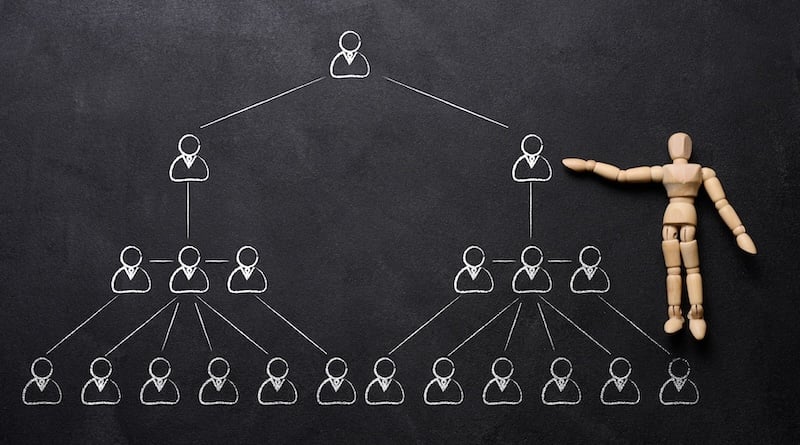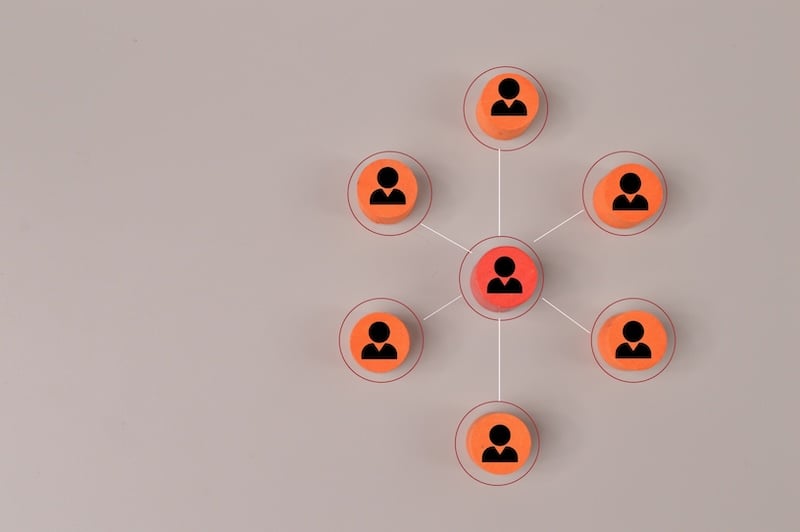At SEO Design Chicago, we’ve mastered Meta’s advanced audience targeting capabilities to help businesses connect with their ideal customers at the perfect moment. This comprehensive guide breaks down Meta’s sophisticated targeting options for Facebook and Instagram ads and reveals which industry verticals benefit most from each approach in 2025.
Meta’s Core Audience Types: The Foundation of Effective Targeting
- 1 Meta’s Core Audience Types: The Foundation of Effective Targeting
- 2 Demographic Targeting: Precision Through Personal Attributes
- 3 Interest-Based Targeting: Connecting Through Passions and Preferences
- 4 Behavioral Targeting: Reaching People Based on Actions
- 5 Special Consideration: Meta’s 2025 Special Ad Categories
- 6 Meta’s 2025 Targeting Trends: Algorithmic Expansion & AI Optimization
- 7 Vertical-Specific Targeting Strategies for 2025
- 8 Measuring Targeting Effectiveness: Analytics for Audience Optimization
- 9 Case Studies: Targeting Success Stories by Industry
- 10 The SEO Design Chicago Meta Targeting Advantage
- 11 Ready to Transform Your Meta Marketing with Precision Targeting?

Meta (Facebook & Instagram) offers three primary audience types for advertisers, each with distinct advantages for different marketing objectives and industries.
Core Audiences
Core audiences allow you to reach people based on standard targeting parameters directly available in Meta Ads Manager.
Available Parameters:
- Location Targeting: Countries, states, cities, postal codes, and radius targeting
- Demographic Targeting: Age, gender, education, relationship status, job titles
- Interest Targeting: Activities, hobbies, entertainment preferences, shopping behavior
- Behavior Targeting: Purchase patterns, device usage, travel habits
- Connection Targeting: People connected to your pages, apps, or events
Best Verticals for Core Audiences:
- Local Service Businesses: Restaurants, salons, fitness centers, professional services
- E-commerce Store Marketing: Fashion, home goods, specialty products
- Travel & Tourism: Local attractions, regional destinations
- Entertainment: Events, venues, activities
- Educational Institutions: Schools, training programs, workshops
Implementation Strategy: For optimal results with Core Audiences, combine broad demographic targeting with specific interest categories. Avoid over-narrowing your audience, as Meta’s 2025 targeting algorithms generally perform better with larger initial audience pools that can be optimized through machine learning.
Custom Audiences
Custom audiences allow you to reconnect with people who already know your business through various touchpoints.
Available Types:
- Customer Lists: Upload customer email lists, phone numbers, or other identifiers
- Website Traffic: Target visitors who performed specific actions on your site
- App Activity: Reach people who have taken certain actions in your app
- Offline Activity: Connect with people who interacted with your business in-person
- Engagement: Target people who engaged with your content on Meta platforms
Best Verticals for Custom Audiences:
- B2B Services: Professional services, SaaS, consulting
- Financial Services: Banking, investment, insurance
- Luxury Goods: High-end fashion, jewelry, premium products
- Healthcare: Clinics, specialized services, wellness programs
- Real Estate: Properties, developments, agencies
- Education: Universities, continuing education, certification programs
Implementation Strategy: For 2025, focus on building robust first-party data strategies, as Meta has tightened its policies on customer list targeting, especially for sensitive categories like housing, employment, and financial services. Any new custom audience campaigns in these categories will require certification starting March 2025.
Lookalike Audiences
Lookalike audiences help you find new people who share similarities with your existing customers.
Available Specifications:
- Percentage match (1-10%) with 1% being most similar
- Source audience selection (customers, website visitors, app users)
- Location refinement
Best Verticals for Lookalike Audiences:
- E-commerce: Online retail across categories
- Subscription Services: Software, content, membership programs
- Consumer Apps: Mobile applications and games
- Direct-to-Consumer Brands: DTC products in various categories
- Media & Publishing: Digital content producers
- Consumer Packaged Goods: Food, beverages, household items
Implementation Strategy: In 2025, Meta has enhanced lookalike audience performance with more sophisticated matching algorithms. For best results, use customer value-based lookalikes instead of simple customer lists, as they help Meta find similar high-value customers rather than just similar demographics.
Demographic Targeting: Precision Through Personal Attributes
Demographic targeting allows you to reach people based on who they are at a fundamental level. Meta’s 2025 demographic targeting options offer powerful segmentation capabilities.
Age & Life Stage Targeting
Available Segments:
- Age Brackets: Granular age targeting from 18 to 65+
- Generation: Gen Z, Millennials, Gen X, Baby Boomers
- Life Stage: College students, recent graduates, new job holders
Best Verticals:
- Higher Education: Universities, colleges, and training programs
- Financial Services: Age-appropriate investment products and banking
- Fashion & Apparel: Age-specific clothing and trends
- Technology: Age-appropriate devices and platforms
- Entertainment: Age-relevant content and experiences
Implementation Strategy: For Gen Z (ages 18-24), focus on interactive formats like Reels and Stories, while older demographics typically respond better to informational content in feed placements. In 2025, Meta’s algorithm favors age-appropriate creative matching even more than in previous years.
Education & Work Targeting
Available Segments:
- Education Level: High school, college, graduate degrees
- Fields of Study: Specific academic disciplines
- Employers: Current or past employment at specific companies
- Job Titles: Positions across industries
- Industries: Professional sectors and business types
- Office Type: Home office, small business, enterprise
Best Verticals:
- B2B Software: Industry-specific solutions
- Professional Development: Courses, certifications, and training
- Recruitment: Job placement and career services
- Business Services: Industry-specific solutions
- Professional Attire: Business clothing and accessories
- Financial Services: Professional banking and investment
Implementation Strategy: In 2025, Meta has improved its professional targeting accuracy by incorporating more signals from LinkedIn integration and professional group participation. Combine industry targeting with seniority level for maximum effectiveness in B2B campaigns.
Financial Status Targeting
Available Segments:
- Income Brackets: Estimated household income ranges
- Net Worth Categories: Estimated wealth segments
- Spending Methods: Credit card users, cash spenders
- Investment Types: Investment styles and preferences
Best Verticals:
- Luxury Retail: High-end products and experiences
- Real Estate: Properties at various price points
- Financial Advisor Marketing: Investment products and banking
- Automotive: Vehicles across price ranges
- Travel & Hospitality: Premium travel experiences
- Home Services: Maintenance and improvement for homeowners
Implementation Strategy: Meta’s 2025 financial targeting remains approximate rather than precise, so use it as a general guideline rather than an exact income match. For luxury marketing, combine financial targeting with interest signals like luxury brand affinities and premium shopping behaviors.
Housing & Family Targeting
Available Segments:
- Home Ownership: Owners vs. renters
- Home Type: Houses, apartments, condos
- Home Value: Property value ranges
- Household Composition: Family size and structure
- Parental Status: Parents of children in various age groups
Best Verticals:
- Home Goods: Furnishings and decor
- Home Services: Maintenance, renovation, and improvement
- Family Products: Child-specific products and services
- Insurance: Home and family coverage
- Education: Family-oriented learning programs
- Entertainment: Family activities and content
Implementation Strategy: For 2025, Meta has implemented Special Ad Category restrictions for housing-related advertising, requiring certification and limiting certain targeting options. Use location expansion targeting for real estate marketing to reach people who’ve shown interest in your selected location.
Interest-Based Targeting: Connecting Through Passions and Preferences
Interest targeting reaches people based on their demonstrated affinities, allowing for highly engaged audience segments.
Entertainment & Media Interests
Available Segments:
- Gaming: Game types, platforms, specific titles
- Movies & TV: Genres, shows, franchises
- Music: Genres, artists, concerts
- Books & Reading: Fiction, non-fiction, specific authors
- Social Media: Content consumption preferences
Best Verticals:
- Entertainment Marketing: Content producers and distributors
- Gaming: Games and gaming equipment
- Consumer Electronics: Entertainment devices
- Merchandise: Entertainment-themed products
- Streaming Services: Content subscription platforms
- Event Promoters: Concerts, festivals, and live events
Implementation Strategy: For 2025, Meta has enhanced its interest targeting with more specific content affinities. Test “interest stacking” by combining multiple related interests rather than broad categories for better engagement rates.
Shopping & Fashion Interests
Available Segments:
- Fashion Styles: Clothing preferences and aesthetics
- Beauty Products: Cosmetics, skincare, grooming
- Shopping Behavior: Online shoppers, discount seekers
- Brand Affinities: Preference for specific retailers
- Product Categories: Interest in specific types of goods
Best Verticals:
- Fashion Digital Marketing: Clothing and accessories
- Beauty Brands: Cosmetics and personal care
- Specialty Retail: Category-specific products
- Online Marketplaces: E-commerce platforms
- Luxury Goods: Premium products
- Discount Retail: Value-focused shopping
Implementation Strategy: In 2025, Meta has enhanced its shopping signals with data from Facebook Marketplace and Instagram Shopping activity. Target shopping behaviors alongside specific product interests for higher conversion rates.
Food & Culinary Interests
Available Segments:
- Cuisine Types: Ethnic and style preferences
- Dietary Preferences: Vegetarian, vegan, keto, etc.
- Cooking Enthusiasts: Home chefs and food hobbyists
- Beverage Preferences: Coffee, wine, craft beer
- Dining Habits: Restaurant preferences and frequency
Best Verticals:
- Restaurants: Dining establishments
- Food Delivery: Meal services and delivery platforms
- Specialty Food: Gourmet and ethnic products
- Kitchen Equipment: Cooking tools and appliances
- Beverage Brands: Drinks across categories
- Grocery Services: Shopping and delivery
Implementation Strategy: Meta’s 2025 algorithm shows improved performance when targeting specific cuisine interests alongside broader food categories. For restaurant marketing, leverage location expansion targeting to reach people who’ve shown interest in dining in your area.
Travel & Adventure Interests
Available Segments:
- Travel Types: Adventure, luxury, budget, family
- Destinations: Interest in specific locations
- Activities: Hiking, beach, cultural experiences
- Transportation: Airlines, cruises, road trips
- Accommodation: Hotels, rentals, camping
Best Verticals:
- Tourism and Hospitality Marketing: Destination marketing
- Hotels & Accommodations: Lodging options
- Airlines & Transportation: Travel services
- Tour Operators: Guided experiences
- Travel Gear: Equipment and accessories
- Travel Insurance: Coverage for travelers
Implementation Strategy: In 2025, Meta’s updated location targeting allows travel advertisers to reach potential customers who don’t live in your location but have connections to it. Use this feature to target people who have shown interest in your destination through searches and social connections.
Behavioral Targeting: Reaching People Based on Actions
Behavioral targeting connects with audiences based on their demonstrated activities and habits, creating highly predictive targeting segments.
Purchase Behavior
Available Segments:
- Shopping Patterns: Frequency and category preferences
- Product Owners: Ownership of specific products
- Spending Habits: Budget vs. premium shoppers
- Purchase Timeline: Recent vs. historical activity
- Shopping Seasonality: Holiday and occasion shoppers
Best Verticals:
- Retail: Both online and physical stores
- Consumer Electronics: Devices and accessories
- Home Goods: Furnishings and decor
- Fashion: Clothing and accessories
- Specialty Products: Category-specific items
- Subscription Services: Recurring product deliveries
Implementation Strategy: Meta’s 2025 purchasing behavior targeting has been enhanced with more signals from Facebook Marketplace activity. Target “engaged shoppers” who have a history of clicking on ads and making purchases for higher conversion rates.
Digital Activity Behavior
Available Segments:
- Device Usage: Mobile, tablet, desktop users
- Operating System: iOS, Android, Windows
- Browser Preference: Chrome, Safari, Firefox
- App Usage: Categories and specific applications
- Technology Early Adopters: First movers on new tech
- Internet Connection: Connection type and speed
Best Verticals:
- Technology: Devices and accessories
- Software & Apps: Digital tools and services
- Telecommunications: Internet and mobile services
- Digital Content: Subscription services
- Gaming: Video games and platforms
- E-commerce: Online shopping platforms
Implementation Strategy: In 2025, Meta’s device targeting is particularly valuable for app downloads or mobile-centric campaigns. Target by device type, OS, and connection type for highly tailored reach, especially for technology products.
Travel Behavior
Available Segments:
- Frequent Travelers: Regular journey takers
- Travel Types: Business vs. leisure travel
- International Travelers: Cross-border journey makers
- Commuters: Regular local travelers
- Transportation Preferences: Air, rail, road travelers
- Accommodation Types: Hotel, rental, timeshare users
Best Verticals:
- Airlines & Airports: Air travel services
- Hotels & Accommodations: Lodging options
- Ground Transportation: Rail, car services
- Travel Insurance: Coverage for travelers
- Luggage & Accessories: Travel equipment
- Destination Services: Local experiences and activities
Implementation Strategy: For 2025, Meta’s algorithm performs better with broader travel intent signals rather than hyper-specific travel behaviors. Combine travel behavior with appropriate geographic targeting using location expansion for better results.
Automotive Behavior
Available Segments:
- Vehicle Owners: By make, model, and type
- Purchase Timeline: New vehicle shoppers
- Vehicle Type Preference: SUV, sedan, truck
- Vehicle Price Range: Budget to luxury
- Automotive Enthusiasts: Car hobbyists and fans
- Auto Services: Maintenance and repair customers
Best Verticals:
- Auto Dealerships: New and used vehicle sales
- Auto Services: Maintenance and repair
- Auto Parts: Replacement parts and accessories
- Auto Finance: Loans and leasing options
- Auto Insurance: Vehicle coverage
- Aftermarket Products: Customization and enhancements
Implementation Strategy: In 2025, Meta’s automotive targeting still performs well despite privacy changes. Target users based on their demonstrated interest in specific vehicle makes or auto-related content rather than relying heavily on third-party auto purchase data.
Special Consideration: Meta’s 2025 Special Ad Categories
In 2025, Meta has expanded its Special Ad Categories to include Financial Products and Services alongside existing Housing and Employment categories. These changes significantly impact targeting options for affected industries.
What Advertisers Need to Know
New Financial Special Ad Category:
- Expanded beyond credit to include banking, insurance, and investments
- Certification requirements for custom audiences (starting March 2025)
- Restrictions on detailed targeting options
Targeting Limitations for Special Categories:
- Location: State-level targeting only (no ZIP code targeting)
- Age: Must include 18-65+ range (no age restriction)
- Gender: Must include all genders
- Detailed Targeting: Limited demographic, behavioral, and interest options
- Lookalike Audiences: Restrictions on Meta-data-based lookalikes
Affected Verticals:
- Financial Services: Banking, investment, insurance, credit
- Housing: Real estate, rentals, home services
- Employment: Job listings, recruitment, professional services
Compliance Strategy: For advertisers in these categories, focus on first-party data strategies and custom audiences with proper certification. Leverage creative testing and placement optimization to compensate for targeting limitations.
Meta’s 2025 Targeting Trends: Algorithmic Expansion & AI Optimization
Meta’s targeting approach in 2025 has evolved toward broader targeting with algorithmic refinement rather than narrow, manually defined audiences.
Advantage+ Audiences
Meta’s AI-driven targeting that automatically finds your audience based on your campaign objective.
Key Features:
- Automatic audience optimization based on performance
- Less reliance on manual targeting parameters
- Machine learning based on conversion data
Best Verticals:
- E-commerce: Online retail with clear conversion goals
- App Installs: Mobile application promotion
- Lead Generation: Service businesses seeking inquiries
- Event Promotion: Ticketed events and registrations
- Product Catalogs: Multiple product offerings
Implementation Strategy: With Advantage+ audiences, you can still provide a “suggested” starting audience, which the system will use as a foundation before expanding. For optimal results in 2025, provide a solid starting point with relevant interests, but avoid over-restricting the audience size.
Location Expansion Targeting
New in 2025, Meta’s location targeting expansion helps businesses reach people beyond their specified geography who have shown interest in that location.
Key Features:
- Reaches people who have shown interest in your location
- Based on recent visits, searches, and social connections
- Automatically enabled for city/region targeting
Best Verticals:
- Travel & Tourism: Destinations and attractions
- Hospitality: Hotels and accommodations
- Retail: Physical store locations
- Entertainment: Venues and events
- Real Estate Digital Marketing: Property listings in specific areas
Implementation Strategy: According to Meta, this feature has proven benefits with advertisers seeing lower cost per result. Particularly valuable for businesses wanting to attract visitors or customers who don’t live in their immediate area.
Detailed Targeting Phaseout
Meta is continuing to phase out detailed targeting exclusions in 2025, changing how advertisers refine their audiences.
Key Changes:
- Removal of detailed targeting exclusions (completed January 31, 2025)
- Shift toward inclusion-based targeting only
- Greater reliance on algorithmic optimization
Impact on Verticals:
- All industries: Need to adapt targeting strategies
- Retail: Cannot exclude previous purchasers using detailed targeting
- Subscription Services: Cannot exclude current subscribers
- B2B Services: Cannot exclude non-relevant business types
Adaptation Strategy: Use custom audiences for exclusions instead of detailed targeting exclusions. Upload customer lists of people to exclude, or create website/app activity audiences for exclusion purposes.
Vertical-Specific Targeting Strategies for 2025
Different industries require tailored audience approaches. Here are strategic combinations for specific verticals in 2025:
E-commerce & Retail
Optimal Targeting Combination:
- Product catalog ads with Advantage+ catalog campaigns
- Custom audiences based on website visitors and purchases
- Lookalike audiences of high-value customers
- Interest targeting aligned with product categories
- Shopping behavior targeting for engaged shoppers
Implementation Strategy: In 2025, Meta’s e-commerce success relies heavily on proper catalog setup and product feed optimization. Use dynamic product ads with broad audience targeting rather than hyper-specific audience segments. Combine with conversion optimization to let Meta’s algorithm find the best prospects.
Success Metrics:
- Return on ad spend (ROAS)
- Cost per purchase
- Average order value
- Add-to-cart rate
- Product view rate
Financial Services
Optimal Targeting Combination:
- Special Ad Category compliance for all campaigns
- Certified custom audiences from verified first-party data
- Location targeting at state level
- Broad demographic targeting (as required by Special Ad Category)
- Strategic creative variations for different audience segments
Implementation Strategy: With the new Financial Services Special Ad Category in 2025, focus on developing strong creative assets and messaging that resonates with different segments within your broader targeting requirements. Use value propositions tailored to different financial situations without explicitly targeting those situations.
Success Metrics:
- Cost per lead
- Application completion rate
- Customer acquisition cost
- Lead quality score
- Compliance certification maintenance
Travel & Hospitality
Optimal Targeting Combination:
- Location expansion targeting to reach potential visitors
- Travel behavior segments (frequent travelers, international travelers)
- Interest targeting for travel types and activities
- Custom audiences of past guests and website visitors
- Seasonality-based campaign timing
Implementation Strategy: Leverage Meta’s new location expansion targeting to find people who have shown interest in your destination. Create separate campaigns for different travel segments (luxury, budget, adventure, relaxation) with appropriate messaging and imagery for each.
Success Metrics:
- Booking conversion rate
- Cost per booking
- Click-to-booking time
- Engagement with destination content
- Return visitor rate
Healthcare Marketing
Optimal Targeting Combination:
- Demographic targeting appropriate to services
- Health and wellness interest categories
- Geographic targeting with location expansion
- Life event targeting for relevant health milestones
- Custom audiences from website visitors and CRM data
Implementation Strategy: Navigate healthcare compliance by focusing on wellness messaging and avoiding specific condition targeting. Use content marketing to attract relevant audiences rather than explicit health condition targeting, which has been limited in Meta’s 2025 updates.
Success Metrics:
- Lead generation cost
- Appointment booking rate
- Content engagement rate
- Service inquiry volume
- Patient acquisition cost
B2B Marketing Strategy
Optimal Targeting Combination:
- Industry targeting aligned with service offerings
- Job title and seniority targeting
- Company size appropriate to service scale
- Work anniversary timing for decision-making
- Custom audiences from website and content engagement
Implementation Strategy: Create separate campaigns for different decision-maker types (technical vs. business) with appropriate messaging. Use content marketing strategies to generate initial engagement before pushing conversion-focused offers.
Success Metrics:
- B2B lead cost
- Sales qualification rate
- Sales cycle length
- Deal size correlation
- Content engagement metrics
Real Estate Digital Marketing
Optimal Targeting Combination:
- Special Ad Category compliance for housing
- Location targeting at state level
- Life event targeting for relevant transitions
- Custom audiences from property search activity
- Engagement-based retargeting
Implementation Strategy: Focus on creating neighborhood and property showcase content that attracts organic interest rather than relying heavily on demographic targeting. Use virtual tours and immersive content to generate engagement from potential buyers/renters.
Success Metrics:
- Property inquiry cost
- Virtual tour completion rate
- Property viewing requests
- Favorited/saved property rate
- Agent contact rate
Measuring Targeting Effectiveness: Analytics for Audience Optimization
At SEO Design Chicago, we continuously optimize targeting through sophisticated analytics tailored to Meta’s 2025 platform capabilities.
Targeting Performance Analysis
Key Dimensions to Analyze:
- Audience overlap assessment
- Segment-specific conversion rates
- Cost per result by audience type
- Audience saturation and frequency
- Creative performance by audience segment
Meta’s 2025 Analytics Enhancements:
- More detailed breakdowns for Advantage+ audiences
- Enhanced conversion path reporting
- Improved attributed conversions reporting
A/B Testing for Audience Refinement
Testing Methodologies:
- Split testing audience types (Core vs. Custom vs. Lookalike)
- Comparative analysis of interest categories
- Behavior targeting effectiveness assessment
- Advantage+ audience vs. manual targeting comparison
- Creative performance across audience segments
Meta’s 2025 Testing Tools:
- Enhanced A/B testing capabilities in Ads Manager
- Audience insight reports for campaign optimization
- Performance evaluation across placements
Adaptation to Privacy Changes
2025 Privacy Considerations:
- Continued impact of iOS 14+ tracking limitations
- Third-party cookie deprecation effects
- Special Ad Category compliance requirements
- Customer list certification processes
Strategic Adjustments:
- First-party data collection enhancement
- Server-side tracking implementation
- Conversion API integration
- Privacy-compliant audience building
Case Studies: Targeting Success Stories by Industry
National Restaurant Chain
Challenge: High customer acquisition costs and inefficient local targeting
Targeting Solution: Implemented Meta’s location expansion targeting with:
- Interest targeting for dining preferences
- Behavioral signals for frequent diners
- Custom audiences of past customers
- Lookalike audiences for customer expansion
- Special occasion and time-of-day targeting
Results:
- 32% reduction in cost per store visit
- 41% increase in food order conversions
- 28% improvement in targeting efficiency
Financial Services Provider
Challenge: Adapting to the new Financial Services Special Ad Category restrictions
Targeting Solution: Created comprehensive compliance strategy:
- Certified custom audiences from verified first-party data
- Broad demographic targeting within guidelines
- Content-focused engagement campaigns
- Sequential messaging based on financial education content
- Creative testing across different value propositions
Results:
- Maintained lead volume despite targeting restrictions
- 18% improvement in lead quality
- 100% compliance with Meta’s certification requirements
E-commerce Fashion Retailer
Challenge: Declining ROAS due to iOS tracking changes
Targeting Solution: Shifted to Advantage+ catalog campaigns with:
- Broad demographic targeting
- Strategic creative variations for different styles
- Custom audience uploading of high-value customers
- Value-based lookalike audiences
- Shopping behavior targeting with engaged shoppers
Results:
- 47% increase in ROAS
- 31% lower cost per purchase
- 24% higher average order value
The SEO Design Chicago Meta Targeting Advantage
Our agency brings unparalleled Meta targeting capabilities to businesses across all verticals in 2025. Our approach combines:
- Platform Mastery: Deep understanding of Meta’s evolving targeting landscape
- Data Integration: Connection of first-party, Meta, and contextual data
- Privacy Compliance: Full adherence to Special Ad Category requirements
- Audience Architecture: Building sophisticated targeting frameworks
- Creative Alignment: Ensuring messaging resonates with targeted segments
- Continuous Optimization: Refinement based on performance data
- Cross-Platform Strategy: Integration with broader digital marketing efforts
Ready to Transform Your Meta Marketing with Precision Targeting?
At SEO Design Chicago, we believe Meta targeting in 2025 requires both technical expertise and strategic insight. Our sophisticated approach combines data-driven precision with creative excellence to connect you with exactly the right audience at exactly the right time.
Our Meta targeting specialists will work with you to develop a custom audience strategy that aligns with your business objectives, target customer profiles, and competitive landscape, all while navigating the platform’s evolving targeting capabilities.
Take the Next Step:
Contact SEO Design Chicago today to schedule a comprehensive Meta targeting assessment. We’ll analyze your current audience approach, identify opportunities for refinement, and develop a strategic targeting roadmap that drives measurable results in the evolving 2025 Meta ads landscape.
Contact us today to begin your journey toward Meta marketing that reaches exactly the right people at exactly the right time.







Contact Us today!